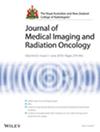Size and Morphology of Ultrasound Detected Gallbladder Polyps and the Surveillance Implications of Adopting the Society of Radiologists in Ultrasound Consensus Conference Recommendations: A Waikato Experience
Abstract
Introduction
Gallbladder polyps, the majority of which are benign, represent a common incidental finding during hepatobiliary ultrasound and generate a significant volume of follow-up imaging. The Society of Radiologists in Ultrasound (SRU) has recently released Consensus Conference Recommendations for the management of incidentally detected gallbladder polyps to address the volume of follow-up imaging without losing sensitivity for detecting neoplastic polyps with malignant potential. The primary aim of this study was to determine the prevalence of morphological polyp types in our population. The secondary aim was to determine the potential implications of adopting this new guideline.
Methods
A retrospective review was conducted of all patients with gallbladder polyps detected on ultrasound scans performed at Waikato Hospital in the year 2018. Individual gallbladder polyps were analysed by size and morphology according to the categories outlined in the SRU Consensus Recommendations. Outcome data included the findings of subsequent ultrasound imaging in the 3 years following the index scan. Histology results in patients who underwent a cholecystectomy were reviewed.
Results
The study cohort comprised 251 patients with 407 polyps; 51.6% of polyps were deemed ‘extremely low risk’; 48.2% were deemed ‘low-risk’ and one polyp (0.2%) was deemed ‘intermediate risk’. Nearly all polyps identified were < 10 mm in size (96.3%). The majority of gallbladder polyps required no follow-up (88.4%). Of those who underwent follow-up imaging, 89.6% of polyps were unchanged, had decreased in size or were no longer visualised. Of the 28 patients who underwent a subsequent cholecystectomy, 20 had no polyps found, six had nonneoplastic polyps and two were found to have neoplastic polyps including one with invasive gallbladder carcinoma.
Conclusion
Adopting the SRU Consensus Recommendations could prevent potentially unnecessary follow-up ultrasounds and improve resource utilisation without loss of sensitivity in detecting gallbladder carcinoma. Consideration, however, should be given to altering these guidelines on a local level to accommodate the increased incidence of gallbladder carcinoma in Māori patients.

 求助内容:
求助内容: 应助结果提醒方式:
应助结果提醒方式:


